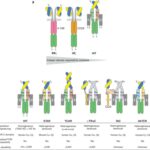Lambda Car Tuning offers significant advantages over traditional Air-Fuel Ratio (AFR) tuning, especially for modern, high-performance engines. While AFR simply compares the mass of air to fuel, lambda measures the actual AFR against the stoichiometric AFR, providing a more precise and adaptable tuning approach. This article delves into the intricacies of lambda car tuning, explaining its benefits and why it’s the preferred method for many professional tuners.
Understanding Lambda in Car Tuning
Lambda represents the ratio of the actual air-fuel mixture to the stoichiometric ratio. A lambda value of 1.0 indicates a perfect stoichiometric ratio, where all fuel is burned completely with the available oxygen. Values above 1.0 signify a lean mixture (excess oxygen), while values below 1.0 indicate a rich mixture (excess fuel). This relative measurement makes lambda particularly useful when tuning engines with varying fuel types and operating conditions.
Lambda vs. AFR: A Clear Advantage
Lambda’s advantage lies in its direct relation to stoichiometry. For example, a lambda of 0.9 signifies a mixture 10% richer than stoichiometric, regardless of the fuel type. This allows tuners to make quick, percentage-based adjustments to fuel maps without complex calculations. Conversely, AFR values change depending on the fuel’s stoichiometric ratio, making it less intuitive for quick adjustments, especially when switching between fuels like gasoline and E85. Using lambda simplifies this process significantly, ensuring consistent performance across different fuel types.
Lambda Tuning and Ethanol Blends
Tuning with ethanol blends presents a unique challenge due to their different stoichiometric ratios. While gasoline has a stoichiometric AFR of around 14.7:1, E85 has a ratio closer to 9.8:1. This means that achieving the same power and efficiency on E85 requires a significantly richer AFR compared to gasoline. However, using lambda maintains a consistent target regardless of the fuel. For instance, targeting a lambda of 0.8 for both gasoline and E85 ensures optimal performance even with the drastic difference in AFR requirements. This consistency simplifies the tuning process and reduces the risk of errors.
Lambda for Precision and Efficiency
Lambda car tuning allows for fine-grained control over the air-fuel mixture, leading to improved engine performance, fuel efficiency, and emissions. By targeting specific lambda values across different operating conditions, tuners can optimize the combustion process for maximum power output while minimizing wasted fuel and harmful emissions. This level of precision is crucial for modern engines with complex fuel injection and ignition systems.
Conclusion: Embracing Lambda for Modern Tuning
Lambda car tuning provides a more accurate, intuitive, and adaptable approach compared to traditional AFR tuning. Its relative measurement simplifies the tuning process, especially when working with various fuel types and complex engine setups. By understanding and utilizing lambda, tuners can unlock the full potential of modern engines, achieving optimal performance, efficiency, and reliability.

